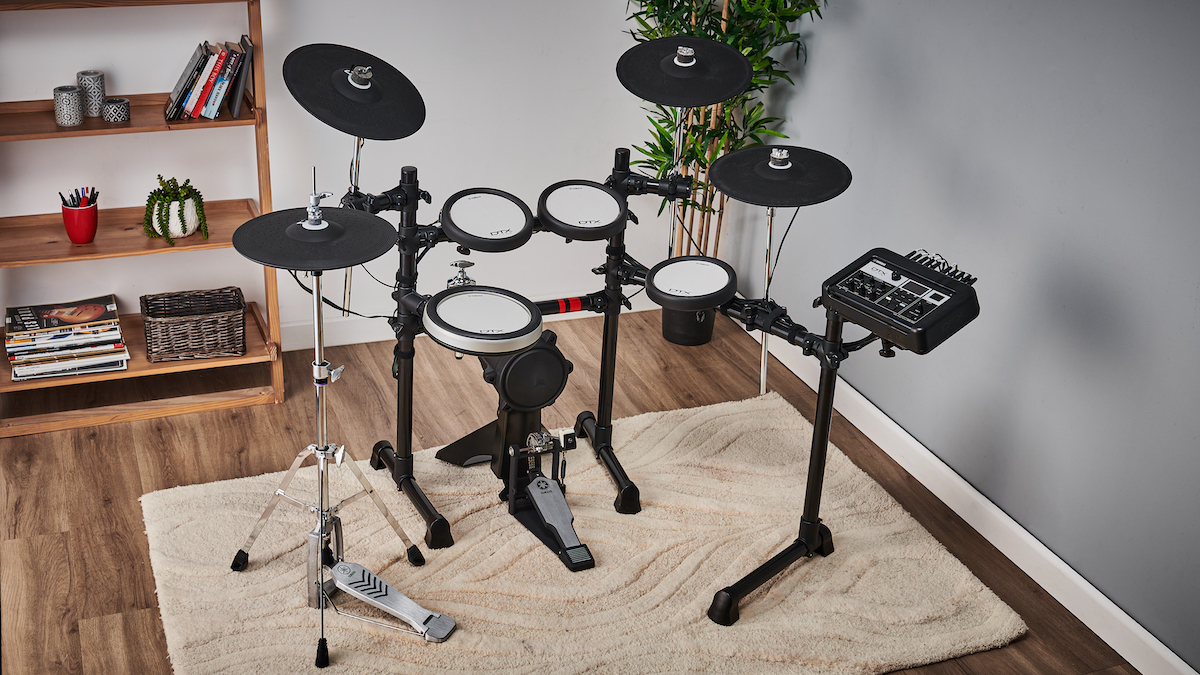MusicRadar Verdict
The DTX6K3-X is a welcome return to the e-kit market from Yamaha. The pad surfaces themselves feel great to play, and the included sounds are certainly among the best we’ve played at this price range in recent times. The comprehensive effects section opens up a lot of experimentation, and the ability to load-in your own samples means that this module is likely to fulfill the creative needs of a lot of drummers from the off.
Pros
- +
Excellent sounds
- +
TCS pads offer great response
- +
Comprehensive processing
- +
Powerful sample import
Cons
- -
The pads feel small
- -
No Bluetooth
- -
Sample management is confusing
MusicRadar's got your back
What is it?
It’s been a long time since we last saw a new electronic drum set from Yamaha. So long, in fact, that a lot has changed, and you could be forgiven for wondering if Yamaha had moved away from e-drum development altogether. Contrary to this is the EAD10 which, since its introduction in 2017, has become a must-have hybrid product for those wanting to record and trigger from an acoustic drum kit, making both tasks incredibly easy, with great results too.
Naturally, we’re hopeful this approach has extended to its Yamaha’s DTX6 series kits. The line is offered in three configurations, all centred around the same DTX Pro sound module. Starting with the most affordable DTX6K-X, which comes equipped with rubber TP70 tom pads, rubber KP65 bass drum pad, 10” crash and ride cymbals plus a 10” hi-hat pad and foot controller. Next up is the DTX6K2-X, which gets you a cymbal pad upgrade to 3x 13” PCY135 cymbal pads, replaces the KP65 with the posher KP90 bass drum pad and throws-in a traditional stand-mounted hi-hat pad. Finally, there’s our review model: the DTX6K3-X.
This is the flagship of the series, and as such gives you the same spec as the mid-level DTX6K2-X, with an upgrade in the form of Yamaha’s TCS (Textured Cellular Silicone) pads across the three toms and snare drum. Experienced drummers will know that Yamaha has a strong reputation in the hardware department, and the RS6 rack that comes with the kit follows this tradition. It’s lightweight yet sturdy, with the pads attaching to their collars via Yamaha’s hex-rod mounts and a thumbscrew on the bottom of each pad. While the rack is one of the most important features of any electronic kit, it’s also the least interesting. So, we’ll park it and move on by saying that you won’t have any problems with pads shifting around while you play.
- Start today with the best beginner electronic drum sets
- The best Yamaha electronic drum kits for every level
Performance and verdict
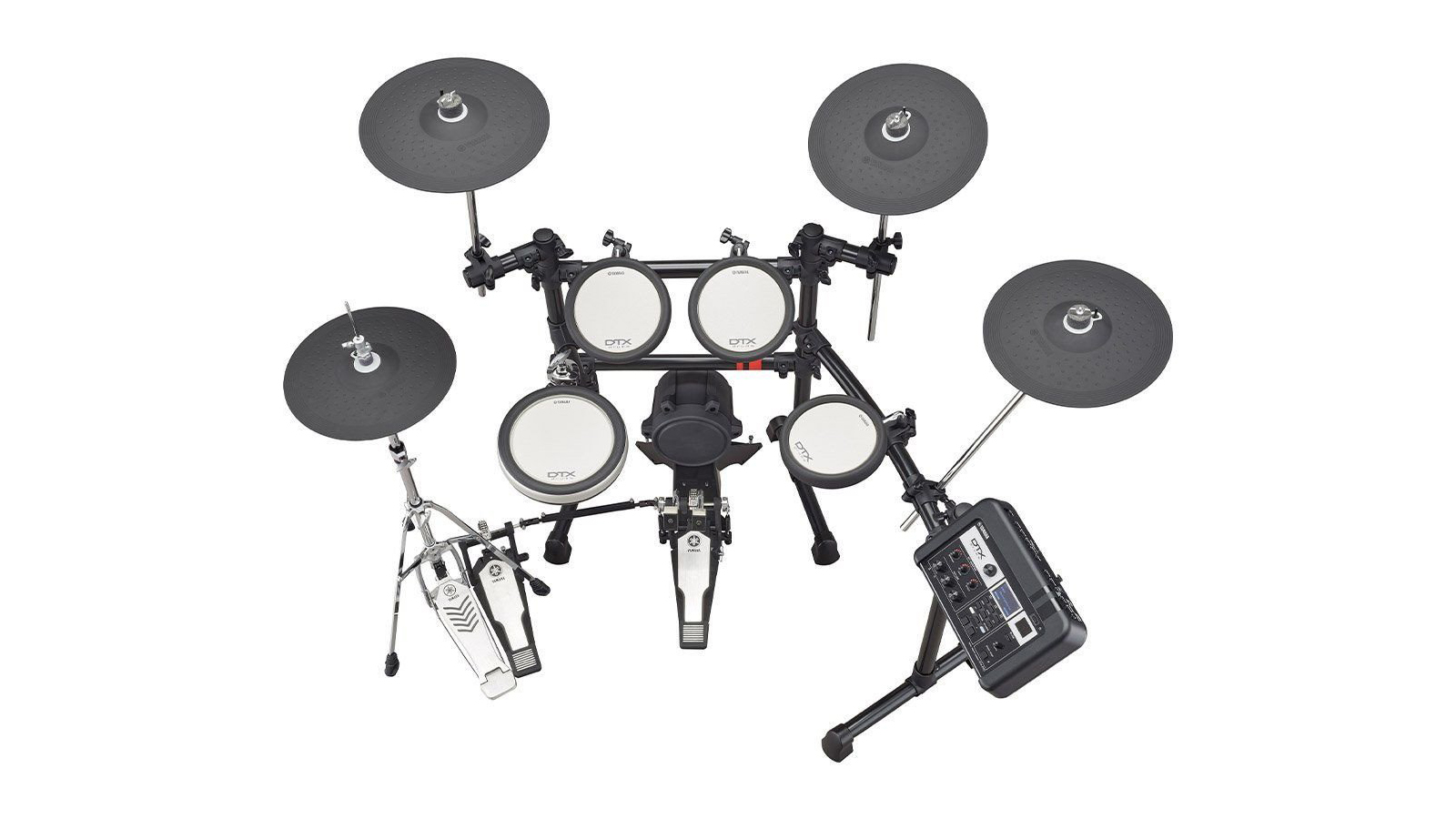
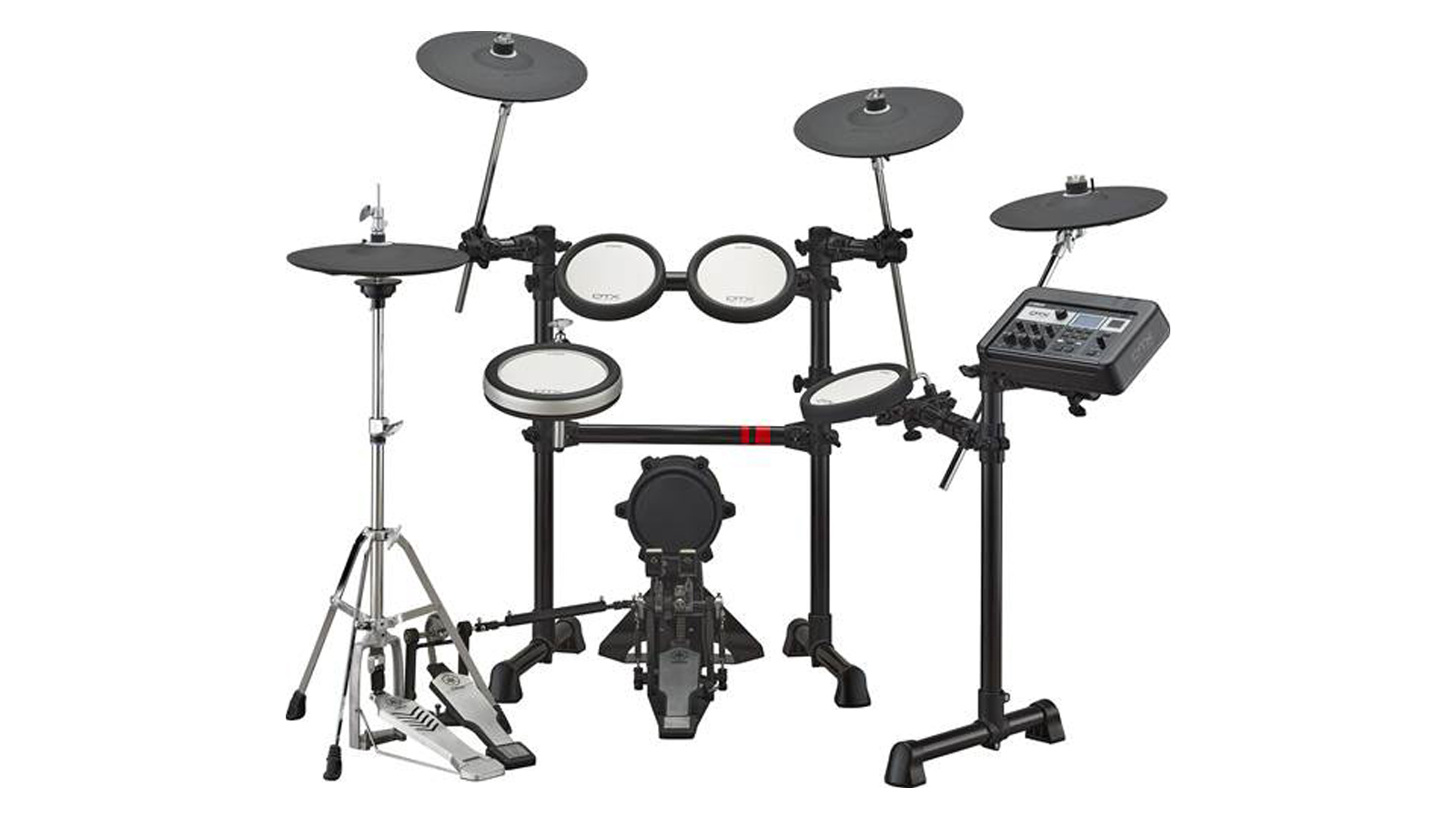
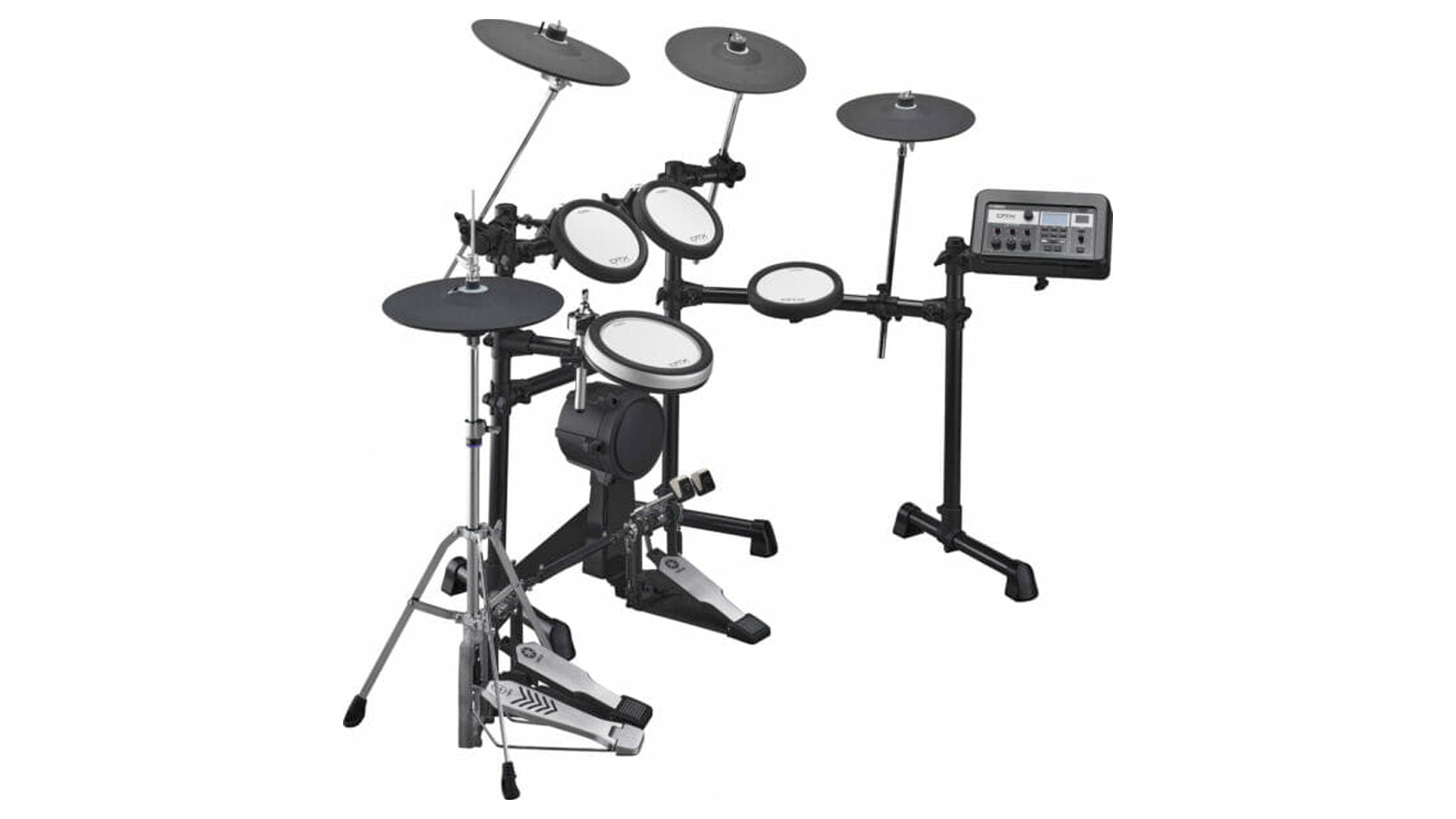
The pads
With all of the pads mounted to the frame and connected by the neatly arranged and labelled cabling system (they’re individual jacks, but they come cable-tied together to avoid an instant rat’s nest), we’re ready to put stick to pad! First though, the DTX Module greets us by taking us through its pad setup wizard which is as simple as telling it which iteration of DTX6 we’re using. It then sets itself to respond accordingly to the pad configuration.
Scrolling the preset menu is a great way of getting a handle on the features the brand is most proud of, as well as acclimatising with the overall kit setup, so that’s where we start.
If you’ve never played Yamaha’s TCS surfaces before, you’ll be wondering how they stack-up compared to mesh or solid rubber pads. The easiest way to describe TCS is somewhere in-between. The white surface is matte, with a textured finish (hence the name) that’s spongier and more forgiving than the harder rubber pads that come with more affordable kits. However we would say that the vibrations are more noticeable than we’ve experienced with mesh pads, and there is a slightly louder acoustic thud to them too.
The bass drum pad is extremely comfortable to play and gives you real confidence in your bass drum strikes.
The tom pads share the same TCS surface, however while the uniform sizes from the rack tom to the floor tom make it possible to get everything positioned into a fairly compact arrangement, we do find ourselves wishing that the snare and floor tom were a bit bigger.
Want all the hottest music and gear news, reviews, deals, features and more, direct to your inbox? Sign up here.
Meanwhile, the bass drum pad gives a feel of its own. The depth of the pad makes it rather substantial, and the velcro/spike grips means that it’s lifting our carpet before it moves anywhere. Unlike the cheaper KP65, the KP90 features a multi-layered cushioned surface. Hitting it with our beater gives a spongy response, to the point that we have to adjust our bass drum pedal settings from the just-above-wrinkle tuning we’re used to on our acoustic kit in order to get a bit more bounce. We also found that we had to experiment with placement when using our double pedal in order to place both beaters in the sweet spot for balanced hits. With these tweaks out of the way, it’s extremely comfortable to play and gives you real confidence in your bass drum strikes.
The cymbals
Finally, there’s the cymbals. The hi-hat is a joy to play, giving us a pad that is the same size as many peoples’ acoustic hi-hats. It responds well to our pedalling, and is lighting-quick when switching between closed and open settings. On that note, we didn’t have to make any adjustments to our hi-hat stand: it just works. Likewise, the cymbal pads react with a similar response.
They’re three-zone (edge, bow and bell) and are also chokable. We love the fact that Yamaha’s mounting system includes a retaining post to stop them spinning and stressing the cables, plus the choke switching is less temperamental than on some e-cymbals. There’s a definite sense that you’re choking the cymbal, and we didn’t experience any miss-switching.
Yamaha DTX Pro module
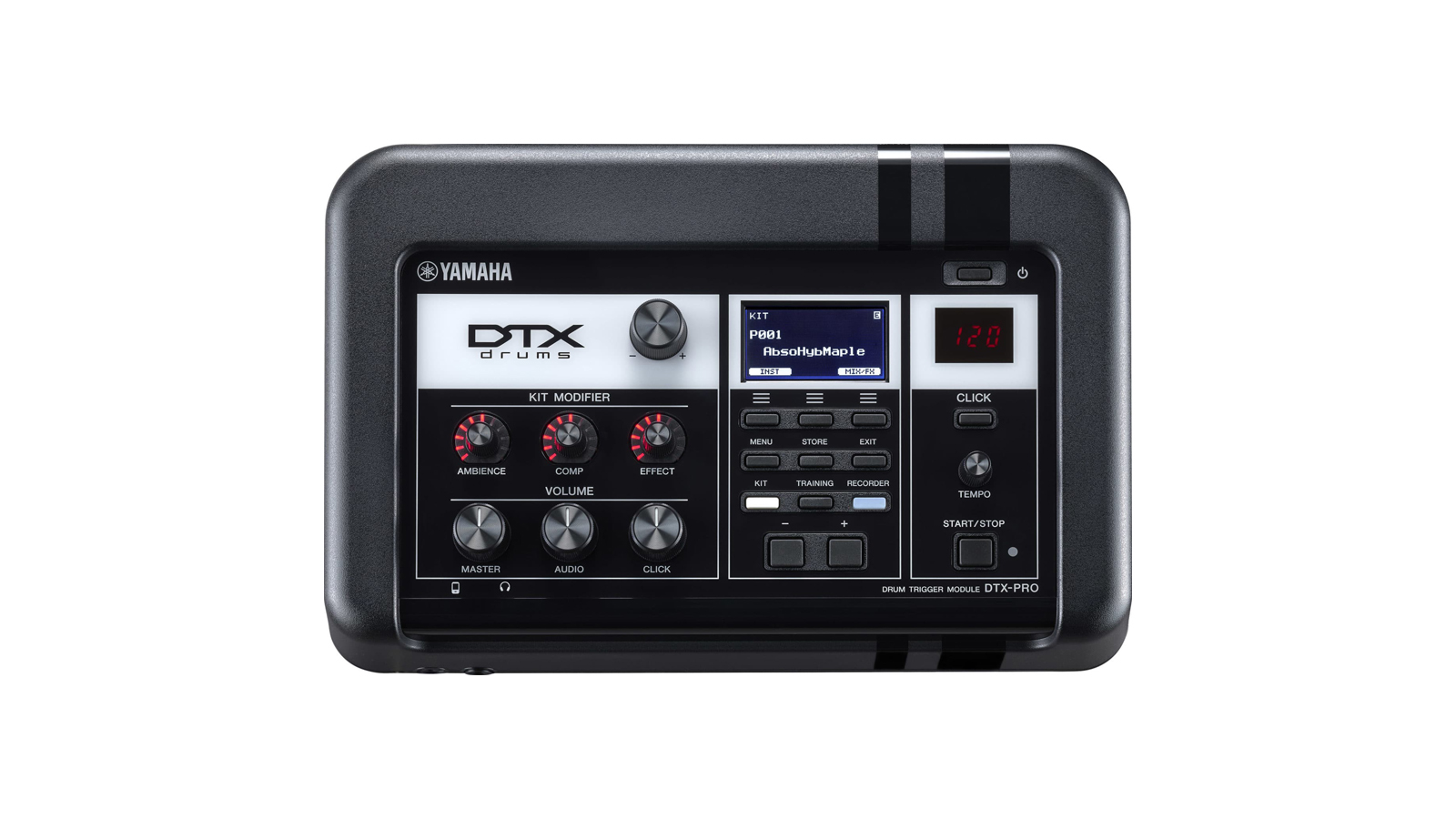

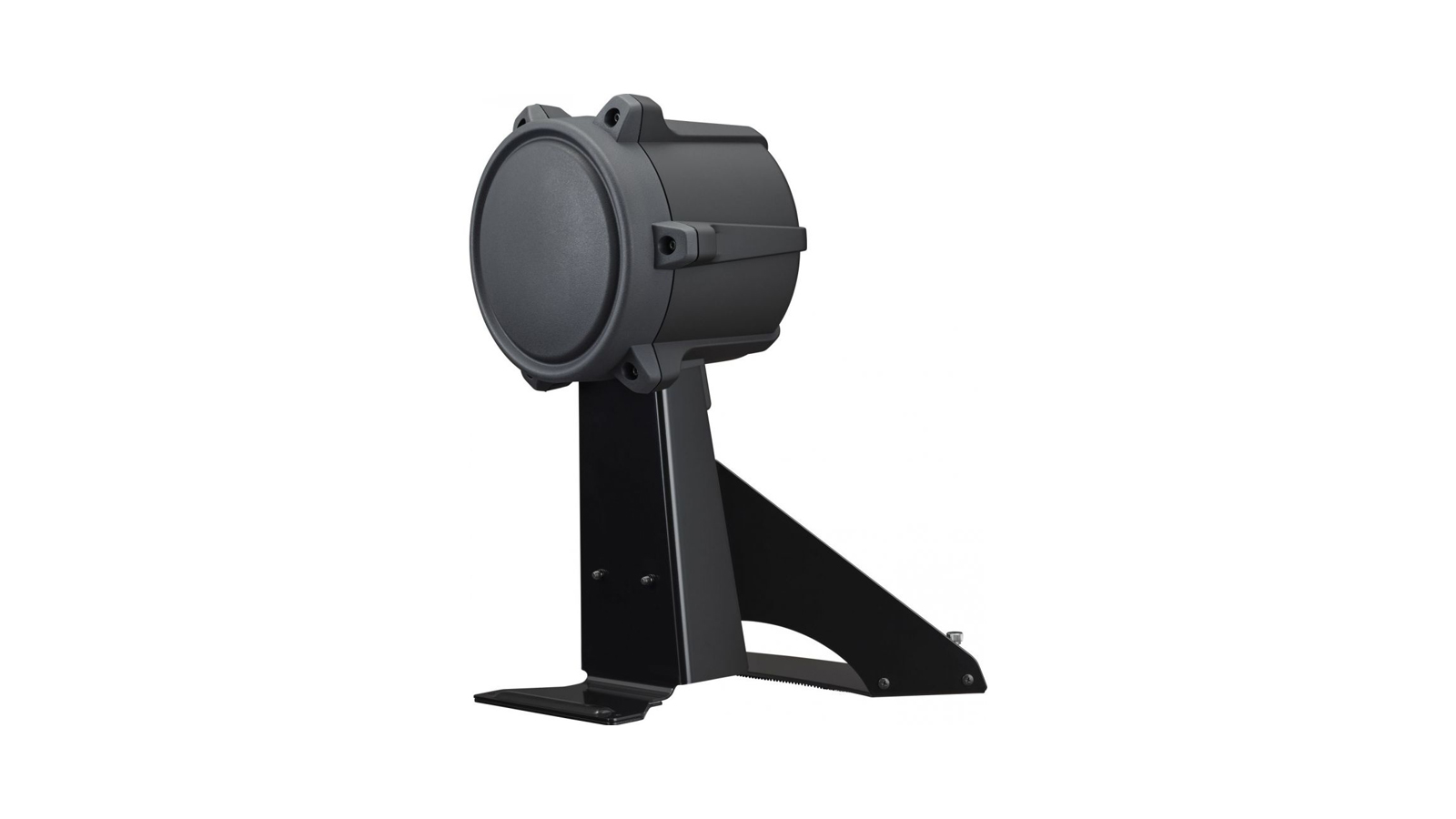
Onto the module, then, and it’s clear that Yamaha has put a lot into the DTX Pro. As well as now-common features such as a USB interface, on-board recording and training options, there’s a strong investment in sound too. Not only does it feature over 700 sounds on-board, many of which have been recorded specifically for this module, but there are a lot of options for processing the sounds within the box.
Every pad features a channel strip including EQ, transient adjustment, compression and insert effects. These work per-pad so you can dial in the right amounts for your individual voices. But the big news is the Kit Modifier controls. There are three dedicated controls on the module for ambience, compression and effect. Ambience dials-in actual, captured room ambience up to the 50 percent mark; after this you get a blend of the studio room sound, and digital reverb.
Compression works independently of your channel compression settings and can range from gentle to full-squash (EAD users will be familiar with a similar effect). The effect control, meanwhile, works as a macro control, dialling in whatever you’ve assigned as the DTX Pro’s master effect, as well as the two send effects. The send effects are governed by how much you send from each individual pad in the mixer section. So, for example, you could apply a master reverb to the entire kit, send your snare and kick to a delay for some Levee-style grooves while sending the toms to a flanger on the second processor, and then determine the overall level of all three effects by turning the one Effect knob.
It doesn’t stop there though, because Yamaha is seemingly wise to the fact that many drummers want to trigger custom samples. The DTX Pro lets you do this via a USB socket on the back, but in order to do so requires a little bit of in-depth knowledge of the DTX’s handling of Instruments and voices.
There are three dedicated controls on the module for ambience, compression and effect.
Each zone of a pad can have up to four voices - labelled A, B,C and D - assigned to it. These can either come from internal sounds or using custom samples. The way the sounds are played back can be designated by choosing a stack (all sounds at once), alternating (cycling through the samples every time you hit) or as velocity layers (different sounds at different velocities). Further to this, using Yamaha’s User Voices feature, you can import 10 sample layers per voice.
Why would you do this? Well, say you have a set of velocity-layered snare drum samples you’d like to trigger from a pad zone without connecting to your computer. Using this function allows you to import 10 individual samples, then define the velocity point that they switch, making for some very realistic possibilities. Factor in that we’re only talking about the ‘A’ voice here, you could do this another three times on the same zone. This means that when you hit the snare drum in a particular zone, the module will choose from one of four samples within that velocity range, so you aren’t just triggering the exact same sound each time you hit.
Still with us? Well hold on to your hat as we remind you that we’re still only considering one zone of a pad. You can apply the same concept to every single zone on the kit, meaning that you could import 120 velocity layered samples onto the snare pad for total dynamic control of snare head, rim and cross-stick samples.
It’s fairly confusing, but put simply, if you’re wondering if you can import custom drum sounds, or chop up melodic/instrumental phrases to this module, the answer is yes! However, given that the DTX Pro features a USB interface for computer connection, a software solution for sample import/management would help make things less confusing.
That said, for sound, feel and overall playing experience, this kit is a ‘must try’.
Hands-on demos
Yamaha_Global
Simon Edgoose
Better Music
Drums Bonedo
Specifications
- Pads: 1x XP80 8” snare pad, 1x KP90 7.5” bass drum pad, 1x RHH135 13” hi-hat pad, 3x XP70 7” tom pads, 3x PCY135 13” cymbal pads
- Sounds: 712
- Kits: 40 preset, 200 user (expandable via USB memory stick)
- Effects: EQ, Compression, Transient Adjust, Insert (per-pad), Ambience, Effect 1, Effect 2, Master Effect, Master EQ/headphone EQ
- Connections: Trigger inputs 1-14, Midi out, USB to host, USB to device, Output L/R, Aux in, Headphone out, power
- Contact: Yamaha

Stuart has been working for guitar publications since 2008, beginning his career as Reviews Editor for Total Guitar before becoming Editor for six years. During this time, he and the team brought the magazine into the modern age with digital editions, a Youtube channel and the Apple chart-bothering Total Guitar Podcast. Stuart has also served as a freelance writer for Guitar World, Guitarist and MusicRadar reviewing hundreds of products spanning everything from acoustic guitars to valve amps, modelers and plugins. When not spouting his opinions on the best new gear, Stuart has been reminded on many occasions that the 'never meet your heroes' rule is entirely wrong, clocking-up interviews with the likes of Eddie Van Halen, Foo Fighters, Green Day and many, many more.
